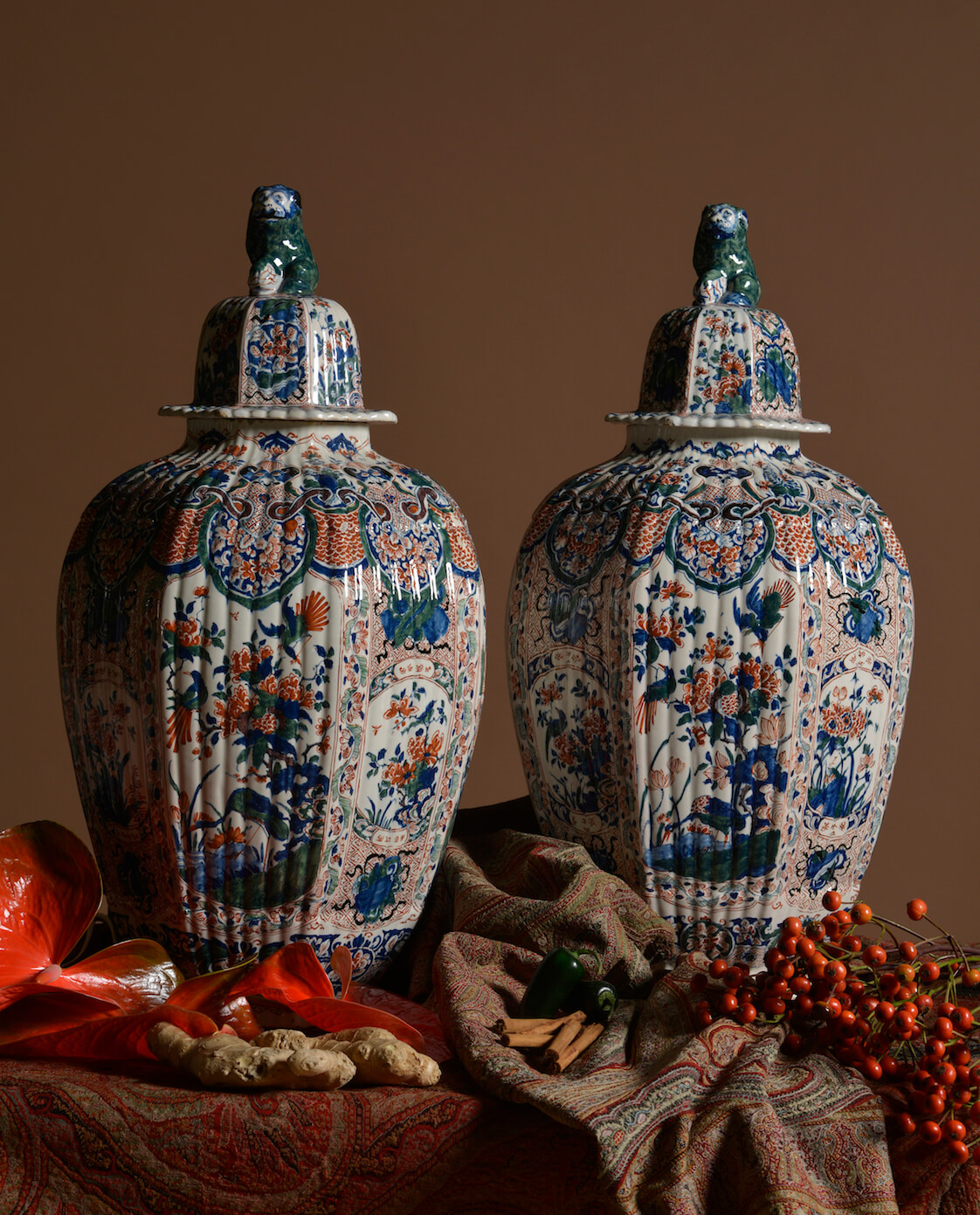From the 20th to 29th of January, the 63rd edition of the Winter Antiques Show in New York will be held. The Winter Antiques Show is the leading art, antiques, and design fair in America, featuring over 70 of the world’s top experts in the fine and decorative arts.
Before the fair begins, we would like to present every day one of the highlights that will be displayed on Aronson Antiquairs’ s booth.
This year, an exhibition dedicated to the very delicate cashmere palette will be organised. This remarkable pair of cashmere large ovoid vases from circa 1710 have a place of importance in the collection.
Marked LVE 38 0 in iron-red on the base of one and LVE 438 40 in blue on the other for Lambertus van Eenhoorn, the owner of De Metaale Pot (The Metal Pot) factory from 1691 to 1721
Of reeded octagonal form and painted with four large panels of exotic birds amidst flowering shrubbery within a flowering vine border, alternating with smaller floral panels between iron-red trellis diaper vignettes with pseudo Chinese characters superimposed with beribboned precious objects, the upper body with an elaborate series of alternating floral and scalework lappets beneath dotted-diaperwork vignettes and scrolls, floral panels and grotesque masks, and the lower body with a dotted- diaperwork border interrupted with floral panels and foliate devices, the cover similarly but less elaborately decorated and surmounted by a seated lion knop, his left foreleg on a marbleized globe.
Dimensions :
Heights: 65.4 cm. (25 3/4 in.)
Provenance:
English Private Collection
Note:
The name, “cashmere” is derived from the fine woolen shawls that were imported from India and were extremely in vogue amongst European ladies from the high society. The “cashmere” palette first appeared in Delft potteries between 1700 and 1720. In Delffse porceleyne, Van Dam defines it as “a particular pattern of spray of flowers completely filling the space on ribbed vases and jars.” One source of inspiration for Delft potters was the arrival of the Chinese ‘famille verte’ (Kangxi period) in Europe at the end of the seventeenth century. The Chinese designs encouraged Delft potters to improve the grand feu technique; the colors became more intense and new shades appeared. The transformation of materials used for the cashmere pieces, from metal to earthenware, undoubtedly required an exceptional grasp of ceramic production.




